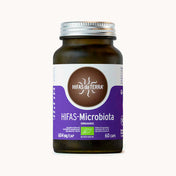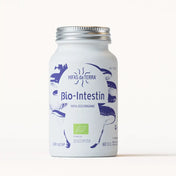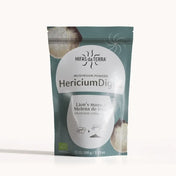Posted on 11/12/23
Author: Hifas Editorial Group
Diseases in nurseries - Why do nursery children get so often?
The main infection factors in nurseries are the proximity between children and the preference for bringing their hands and objects to the mouth. The situation is aggravated in winter, when events move inside. Dry interior air reduces the resistance of the mucous membranes, exhaled aerosols are concentrated in the inner air and the toys that pass from one place to another serve as an ideal means of transport for infections by contact droplets. In addition, the Immune system The child has (yet) little to do against the multitude of viruses and bacteria. The good news is that this is improving step by step.Each infection reinforces immune defenses
It may be little comfort, but for the development of the child's immune system, the exchange of pathogens in nurseries and schools is worth its weight in gold. The background: From birth, children are only equipped with the SInnate or nonspecific immune istema. What they lack is the Immune memory of specific immune defense. While the nonspecific immune defense is given, the adaptive or specific immune system must be acquired gradually. And this works as follows: if you come into contact with a pathogen that has overcome the nonspecific defense, the specific defense is used. In this case, not only the intruder's footprint is analyzed, but also stored in immune memory. The advantage: in case of again contact with this pathogen, the organism is able to eliminate the intruder harmful much faster than in the first contact. Therefore, The immune system learns with each new contact with the pathogen, which is important to create a specific defense.Common nursery diseases
Nursery are a true paradise for bacteria, viruses and the like. In addition to harmless colds, children also share with each other highly infectious diseases. Among the most common nurser diseases are:- Respiratory diseases: cough, throat pain and colds: these are the typical signs of a respiratory disease. Coronavirus and Covid-19 also enter this section.
- Conjunctivitis: Red eyes, frequent rubbing of the eyes and swelling of the edges of the eyelids can indicate conjunctivitis. In addition, the eyelids are usually sticky in the morning and the child complains of burning, itching and/or tearing.
- Gastrointestinal Infection: If diarrhea, nausea and vomiting are produced, they are usually classical gastrointestinal infections.
- Hands, feet and mouth virus: This highly contagious disease caused by viruses usually begins with fever, loss of appetite and throat pain. It is also characterized by small red spots on the tongue and gums, which become painful blisters as the disease progresses. The symptoms that give name to the disease appear below: red spots on the palms of the hands and soles of the feet.
- Scarlet fever: This classic childhood disease is caused by a bacterium. Symptoms include headache, throat pain, chills and fever that raises rapidly. Scarlatin is characterized by a "raspberry tongue". Although at first the tongue is covered in white, the appearance changes after a few days and a raspberry redness can be observed. A cutaneous eruption that does not stick and that can affect the whole body, starting with the armpits, chest and groin, also appears.
To avoid the spread of diseases:
Children with clear disease symptoms (for example, fever) cannot go to the nursery. Parents of sick children are also obliged to notify certain diseases to the nursery. Among the mandatory declaration diseases are scarletin, chickenpox and meningococcal infections.It is better to prevent cure - 5 tips for the whole family
Diseases in nurseries and schools cannot be avoided completely. As a general rule, up to ten colds a year are normal in children. (1) However, taking the appropriate measures, it can help maintain infections within these limits and avoid additional stress for the whole family.1. Five rations of fruit and vegetables a day, with special attention to vitamin C
A healthy and balanced diet It is a basic requirement for health and performance in everyday life, both for adults and for children. Since fruit and vegetables in particular contain many important vitamins and minerals, both adults and children should eat 5 rations of fruit and vegetables per day, divided into two rations of fruit and three vegetables. As the rations of children and adults are inevitably different, the respective hand size is decisive. In basic language: a ration corresponds to a handful. Vitamins and minerals are especially important, since it has been shown that many of these micronutrients reinforce the Immune system. Vitamin c, in particular, it is known for it. Many types of cabbage are ideal sources of vitamin C: for example, white hub, Lombard and Brussels cabbage. Red peppers are also among vegetables with a high content of vitamin C. Black currants, strawberries, oranges, tangerines and kiwis are types of fruit that contain a lot of vitamin C. All this is very good, but does not your child like fruit and vegetables? These specific tips can help you:- Make the fruit and vegetables interesting: use Canpastas, for example, to give a special shape to apples, cucumbers and the like.
- Be a good model: children imitate the example of their parents.
- You don't force anything.
- Try it again and again: your children's preferences change.
2. Make sure you have a sufficient contribution of vitamin D
Vitamin d plays an important role for the Immune system, since it has been shown to contribute to its normal functioning. A sufficient contribution cannot be obtained through food, so children are managed vitamin D from childhood, even by medical prescription! It is an important measure to prevent bone disease of rickets. Studies show that the lack of vitamin D is also relevant in older children and adolescents. (2) The problem: vitamin D can only be obtained in relevant amounts from a few foods. This liposolble vitamin is synthesized mainly through the exposure of the skin to the sun. (3) At the same time, the sun is a great danger to children of nursery and primary age. The harmful UV radiation can not only cause solar burns and eye damage, but it can also lay the bases of skin cancer in old age. Sun protection is mandatory, but also interferes with the absorption of vitamin D. to this the months with little autumn and winter sun, which hinder the absorption of vitamin D. Studies show that many children from Germany and other European countries have serum levels Low of vitamin D, especially in winter and spring. (4) Important: Talk to your pediatrician about whether a vitamin D supplement for your child and, if affirmative, in what dose is advisable.Prominent product
3. Respect hygiene standards
The fact is that many infectious diseases are transmitted through the hands. Therefore, the following applies to the whole family: Washing your hands correctly and regularly helps reduce the risk of infection! Studies confirm that washing your hands regularly can reduce the risk of disease. The more often the hands be wash, the less the risk of infection will be. However, if you wash your hands more than 10 times a day, this practice does not promise any significant advantage over a frequency of 5 to 10 times a day. (5) When your child arrives at the home of the nursery or school, the first stop should be the sink. Washing your hands well is easy, but most adults do not do it correctly:- First, get your hands with running water (hot!).
- Use soap and get on your hands well on all sides for at least 20 seconds.
- It includes fingertips, which can easily surround themselves over palms. Place your hands on top of the other to reach the back of the hands and spaces between the fingers.
- Clarify with running water (hot!).
- Be well with a paper towel or a hand towel (often change it).
4. Sufficient sleep
The human body regenerates during sleep, which also affects the Immune system. If the organism Dream is missing, the functions of T adaptive immune system are reduced. These are white blood cells that seek and eliminate infected cells. The fact is that sleeping well helps Immune system to better face their tasks. The amount of sufficient sleep depends on age. The following applies to preschool and school age:- Children from two years old should sleep between 11 and 14 hours.
- Ideally, children from three to five years sleep between 10 and 13 hours.
- Children from six to twelve should sleep between 9 and 12 hours.
5. Drink enough and regularly
The dryness of the mucous people plays in favor of the pathogens. Therefore, you must ensure that your family drinks enough liquid at regular intervals. This is especially true in winter, when dry air of the heating dry the mucous membranes. Little spectacular, but healthy: The ideal drink is water! How much should children drink? Specific liquid needs depend on several factors. Among others, age, weather and activity play a decisive role. The following information can guide:- Infants from one year should drink about 600 ml a day.
- Children from four to ten years cover their daily liquid needs with a liter.
Conclusion: Infections in the nursery and school are a challenge, but they can contain yourself
He First winter in the nursery is hard, for both parents and children. Numerous factors favor the contagion of many diseases. From harmless colds to very contagious childhood diseases, such as scarletine. Although the regular infections are normal And also important to strengthen the immune system, the bacteria, viruses and similar of the nursery and the school test the nerves of all those involved. Although infections cannot be completely prevented, appropriate measures can help contain disease. The objective of each family member must be a healthy and balanced diet that includes 5 rations of fruit and vegetables per day. This also guarantees the intake of Vitamin c, important for the immune system. If children refuse to eat healthy foods, creativity and patience are required. It is also worth trying to mix them in secret. In addition to vitamin C, Vitamin d It also plays a crucial role for the immune system. Unfortunately, a proper supply of vitamin D cannot be taken for granted, so the possibility of taking supplements should be considered. After all, it is shown that the vitamin of the sun reinforces the immune system. For the rest, infections can be fought with adequate hygienic measures: above all, it is essential Wash your hands thoroughly and regularly. 5 to 10 times a day is a good guideline. If all family members sleep enough and make sure drink enough and regularly, the family will be well prepared to fight bacteria, viruses and the like.-
-
- NCBI, „COMMON COLDS: OVERView”, UNTER: https://www.ncbi.nlm.nih.gov/books/NBK279543/, ZULETZT ABGERUFEN AM 22.05.2023
- Carol L Wagner, Frank R Greer; American Academy of Pediatrics Section on Breastfeeding; American Academy of Pediatrics Committee On Nutrition, NCBI, „Prevention of rickets and vitamin d Deficiety in Infants, Children, and Adolescents”, Unter: https://pubmed.ncbi.nlm.nih.gov/18977996/, Zuletzt ABGERUFEN AM 22.05.2023
- M f Holick, J a maclaughlin, M B CLARK, S A Holick, J T POTTS JR, R Anderson, I h blank, J a Parrish, P elias, NCBI, „Photosynthesis of Previtamin D3 in Human Skin and The Physiologic Concequences”, Unter: Unter: https://pubmed.ncbi.nlm.nih.gov/6251551/, ZULETZT ABGERUFEN AM 22.05.2023
- Thomas Reinehr, Dirk Schnabel, Martin Wabitsch, Susanne Bechtold-Dalla Pozza, Christoph Bührer, Bettina Heidtmann, Frank jochum, Thomas Kauth,8 Antje Körner, Walter Mihatsch, Christine Prell, Silvia Rudloff, BETTINA TENTEL, Joachim Woelfle, Klaus-Peter Zimmer and Berthold Koletzko, „Vitamin D Supplementation after the second year of life: Joint Position of the Committee On Nutrition, German Society for Pediatric and Adolescent Medicine (DGKJ E.V.), and The German Society for Pediatric Endocrinology and Diabetology (Dgked E.V.) https://www.ncbi.nlm.nih.gov/pmc/articles/pmc6502918/#sec1title, Zuletzt ABGERUFEN AM 22.05.2023
- Yangqin Xun, Qingxia Shi, Nan Yang, Nan Yang, Yan Li, Wenwen yes, Qianling Shi, Zijun Wang, Xia Liu, 7 Xuan Yu, Qi Zhou, Minyan Yang, and Yoolong Chen, NCBI, „Associations of Hand Washing Frequency with the Incident of Illness: A Systematic Review and Meta-analysis”, Unter: https://www.ncbi.nlm.nih.gov/pmc/articles/pmc8033386/, Zuletzt 23.05.2023
-
















